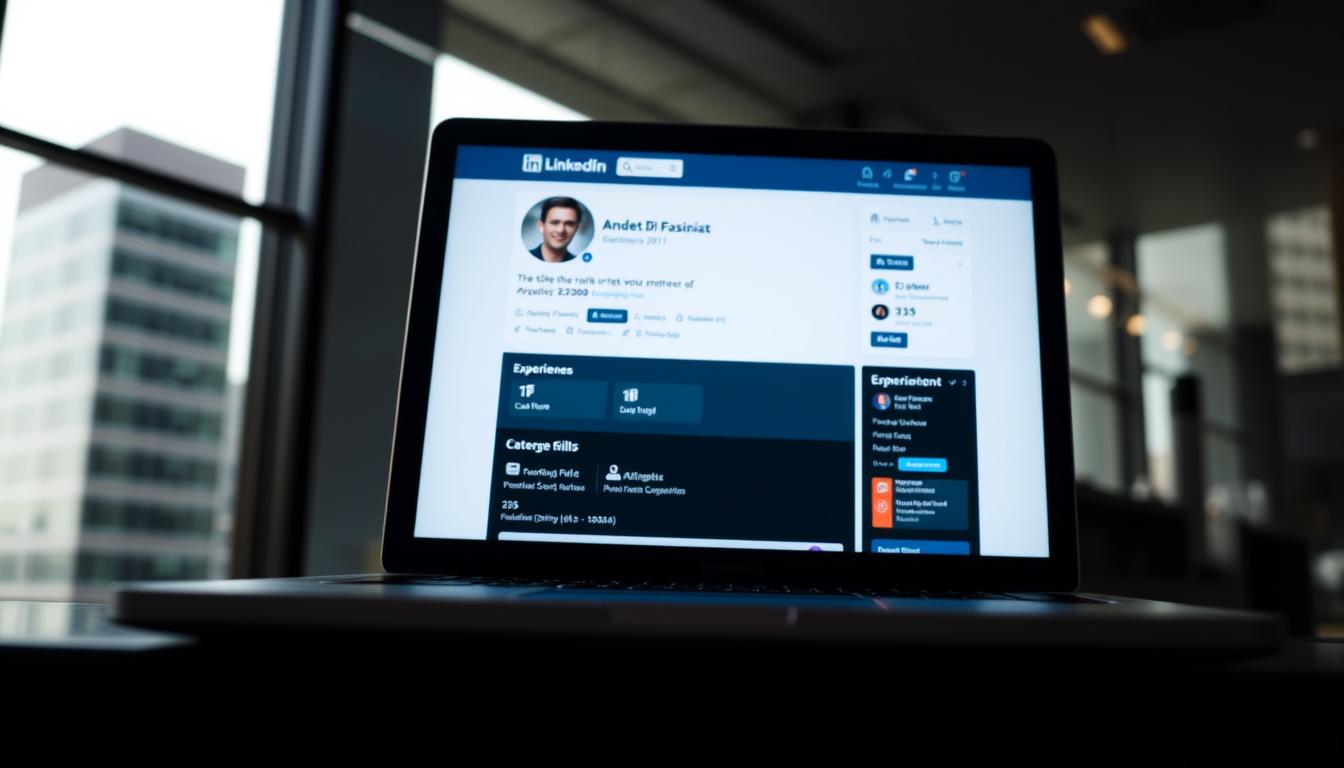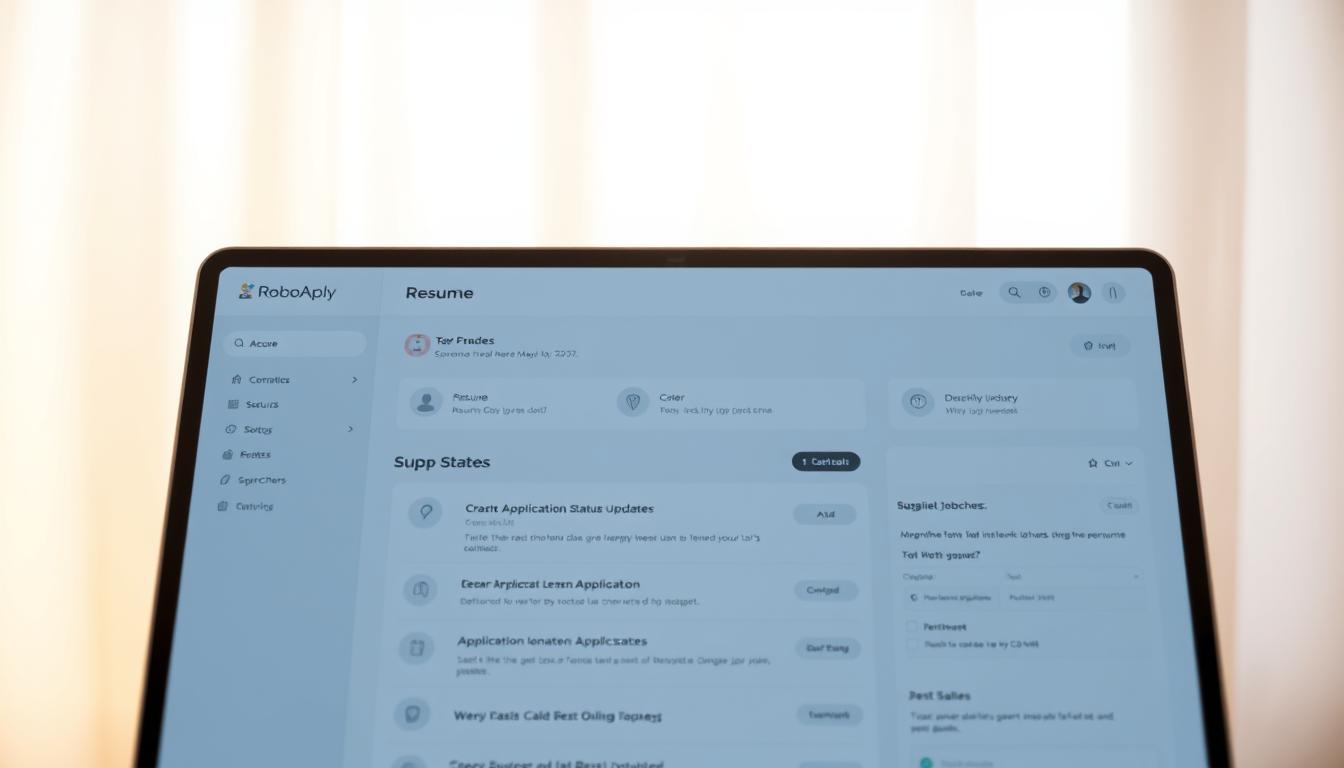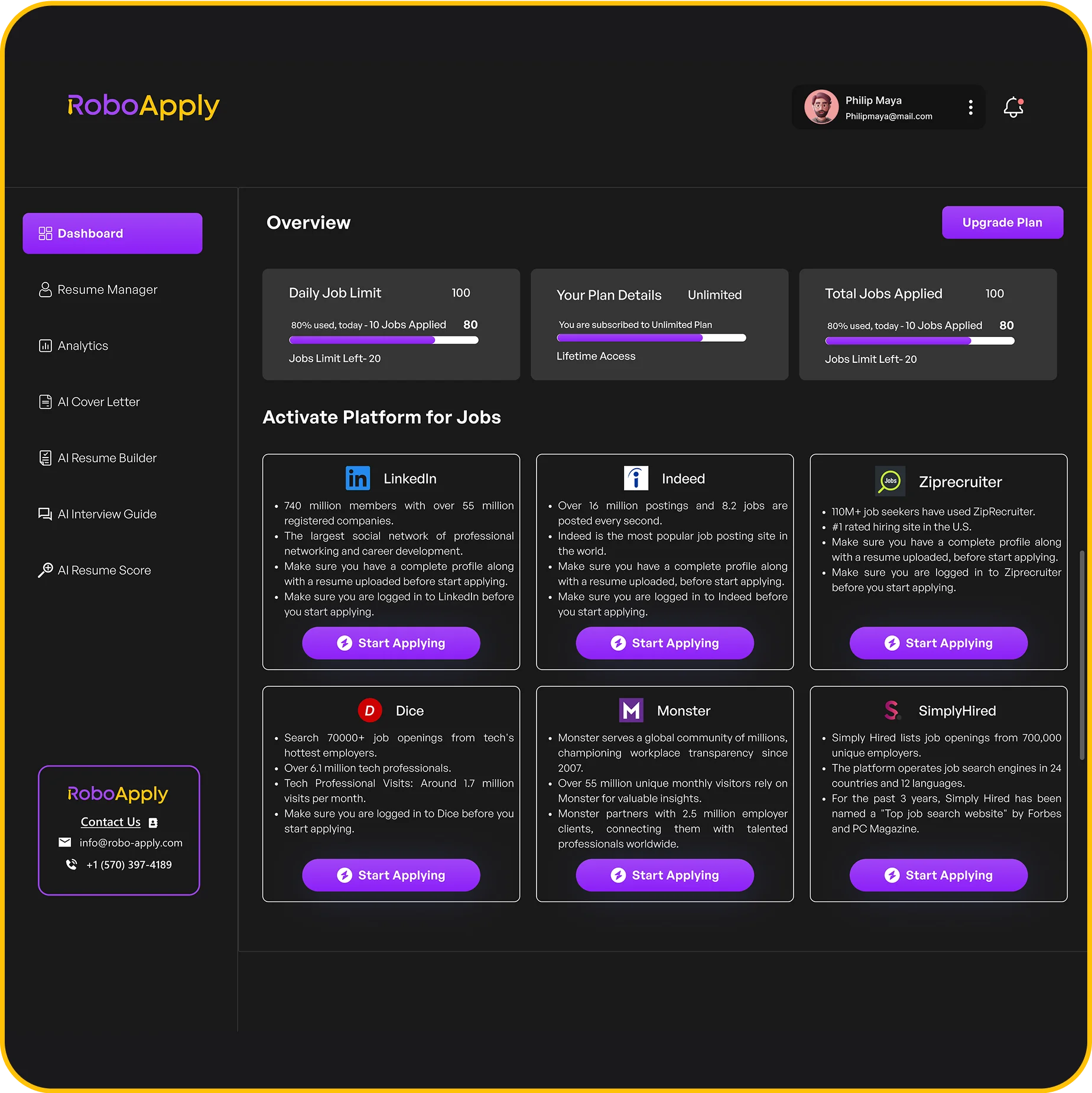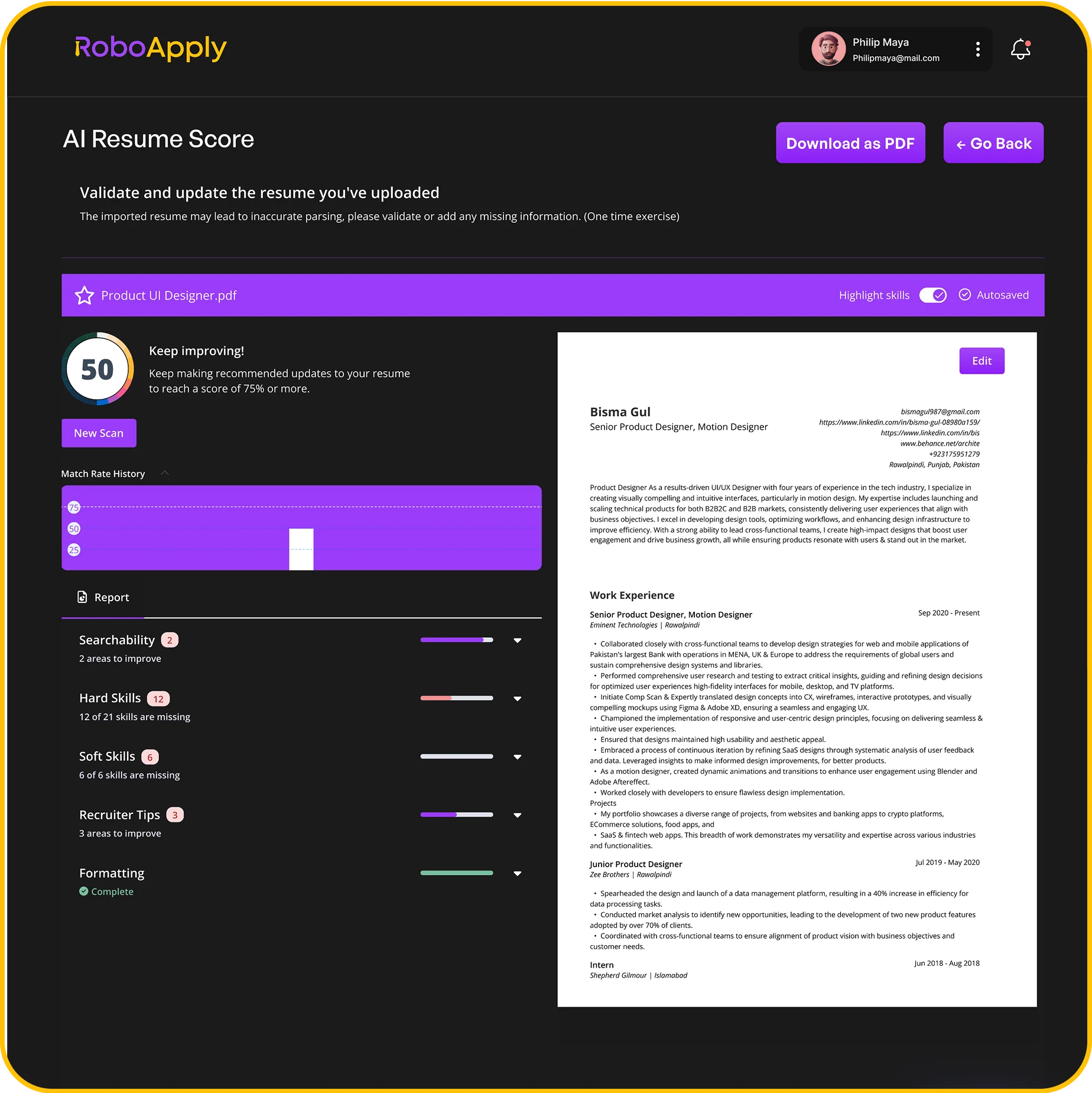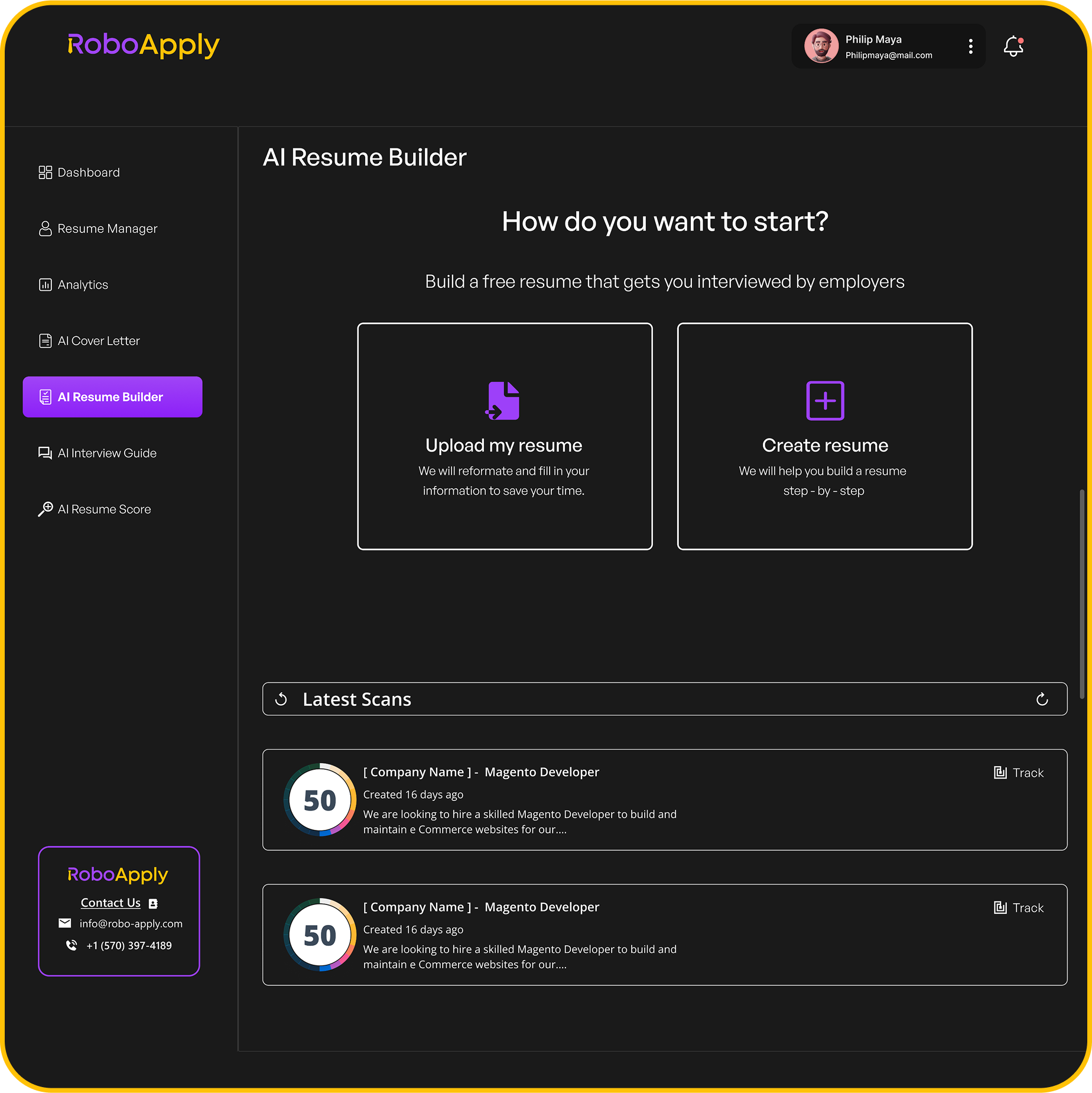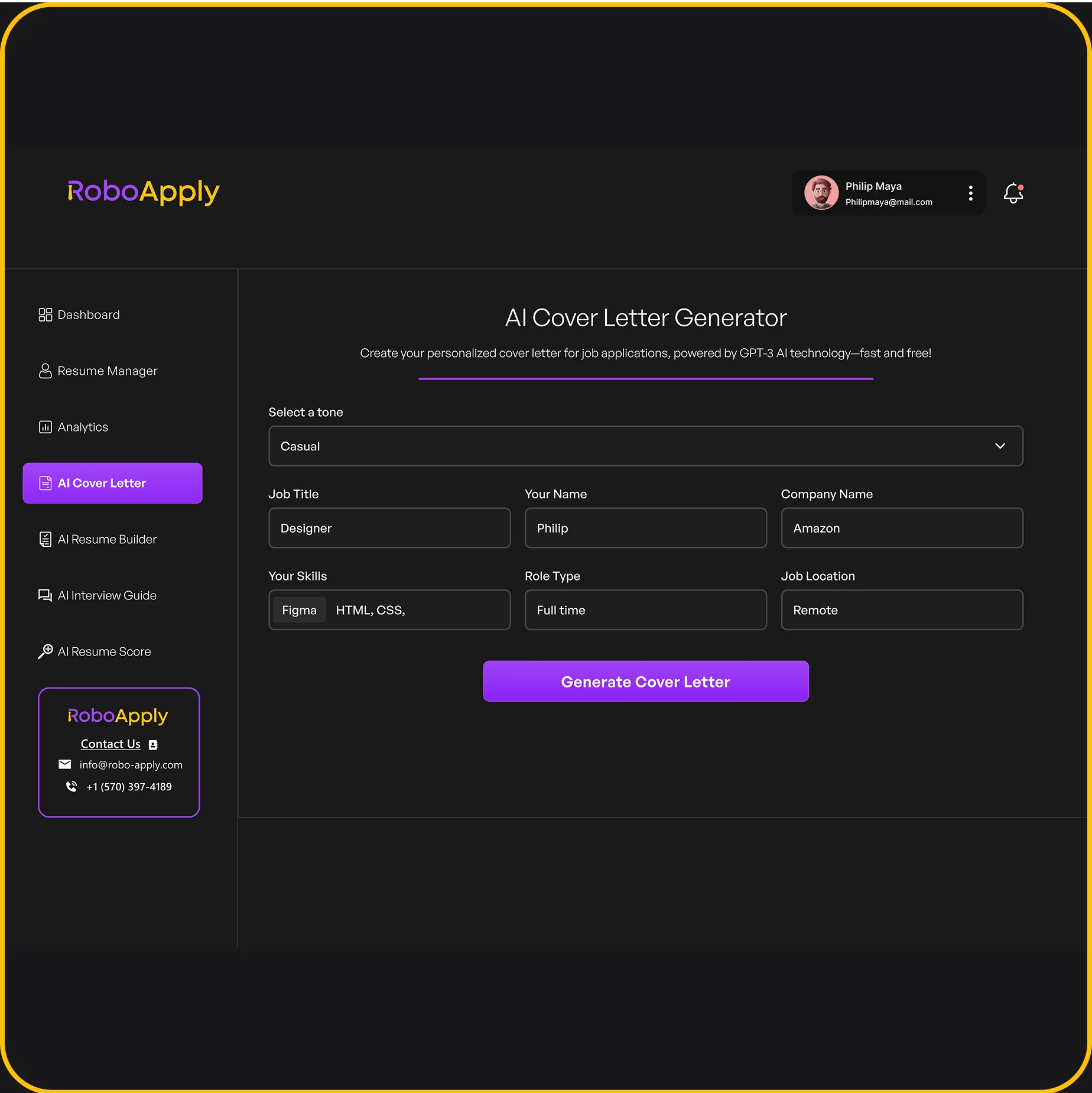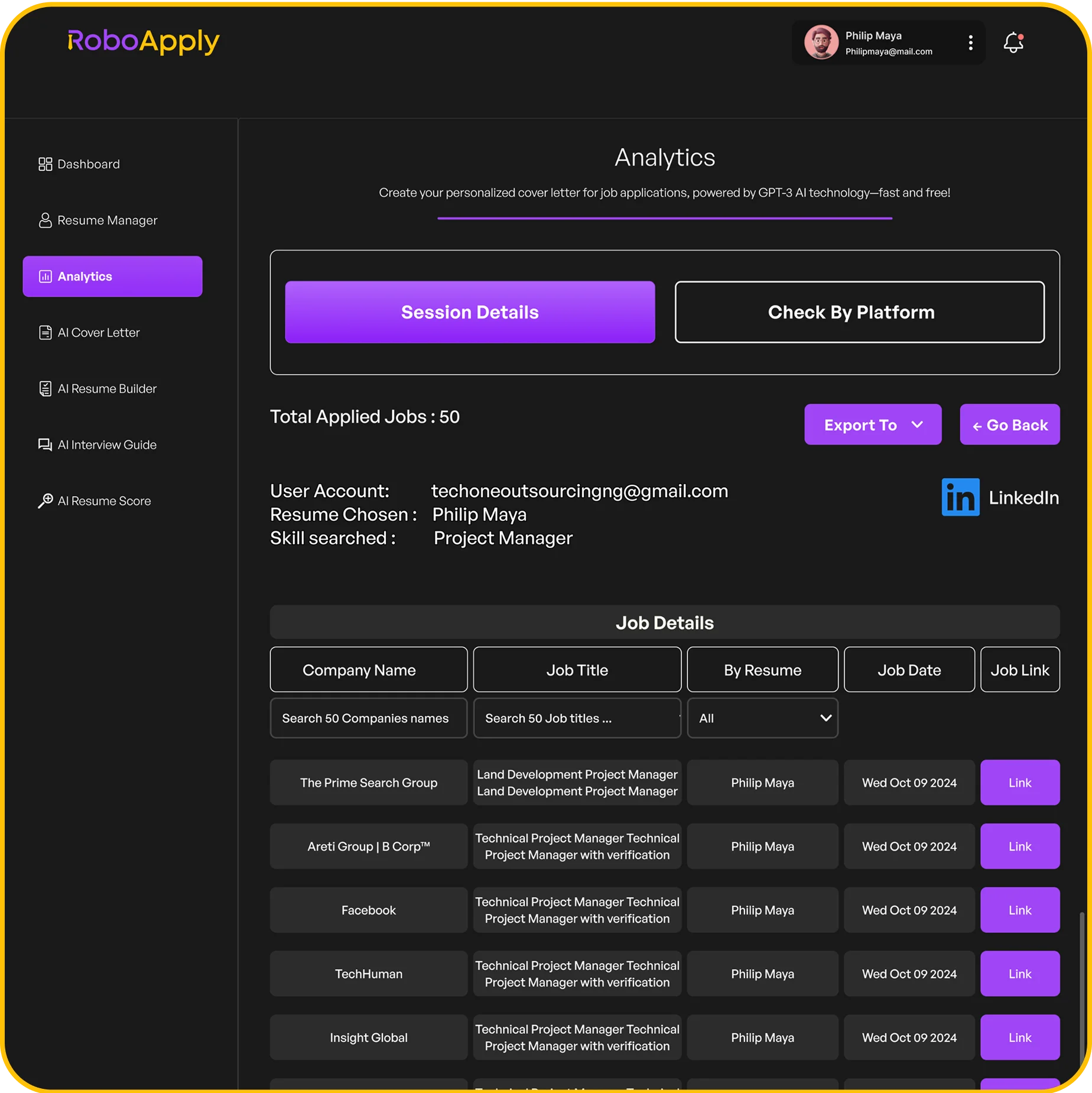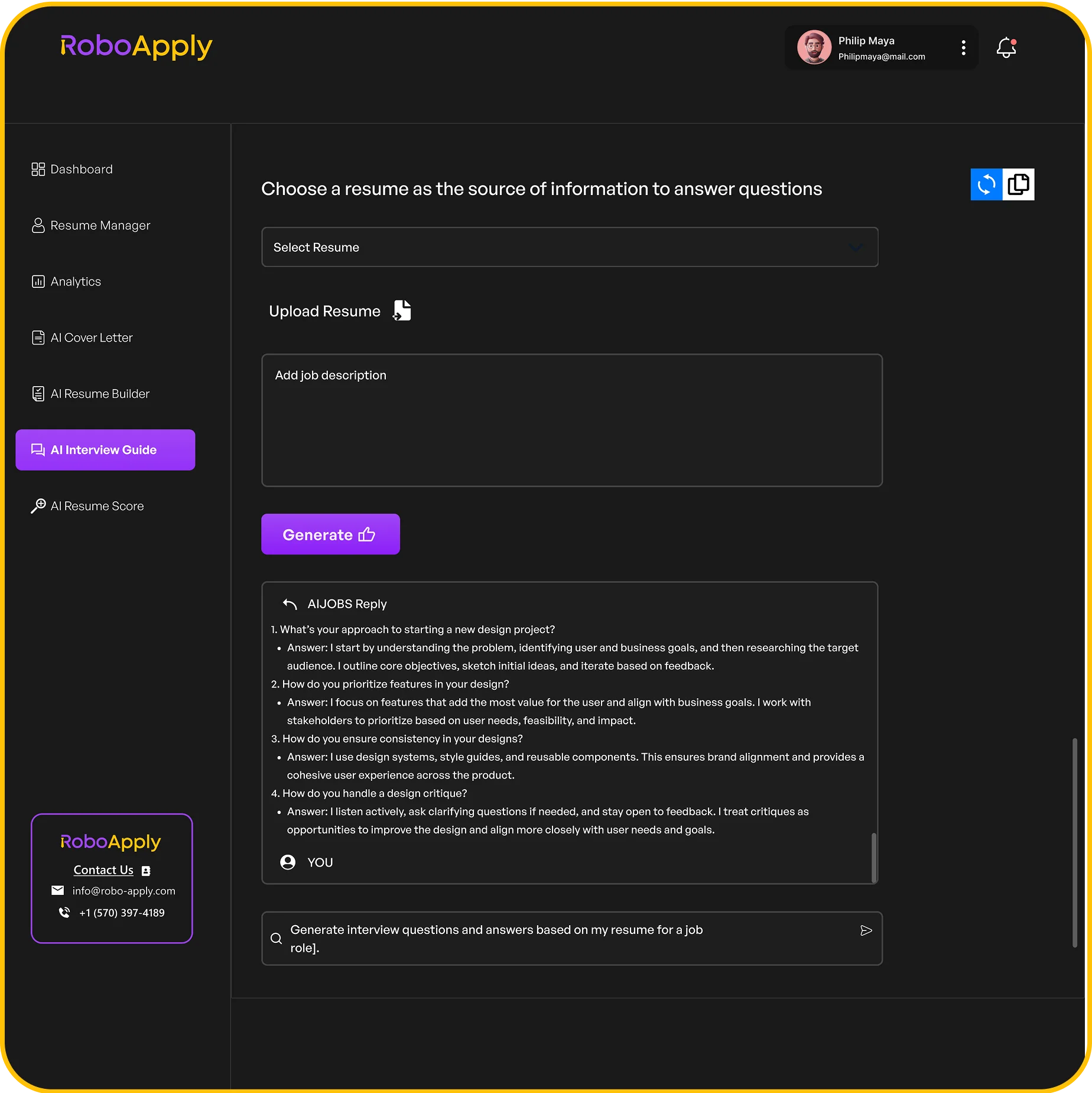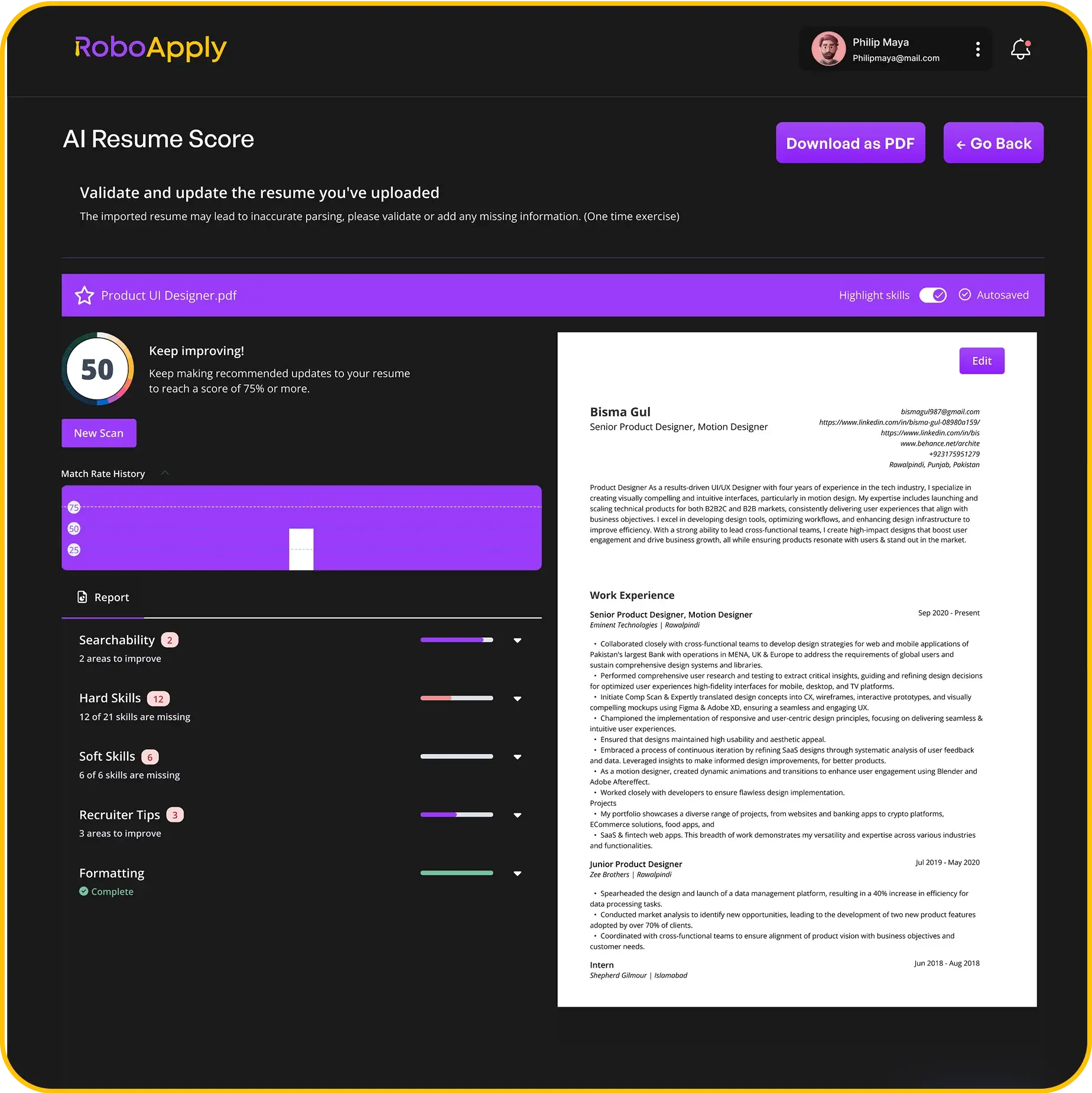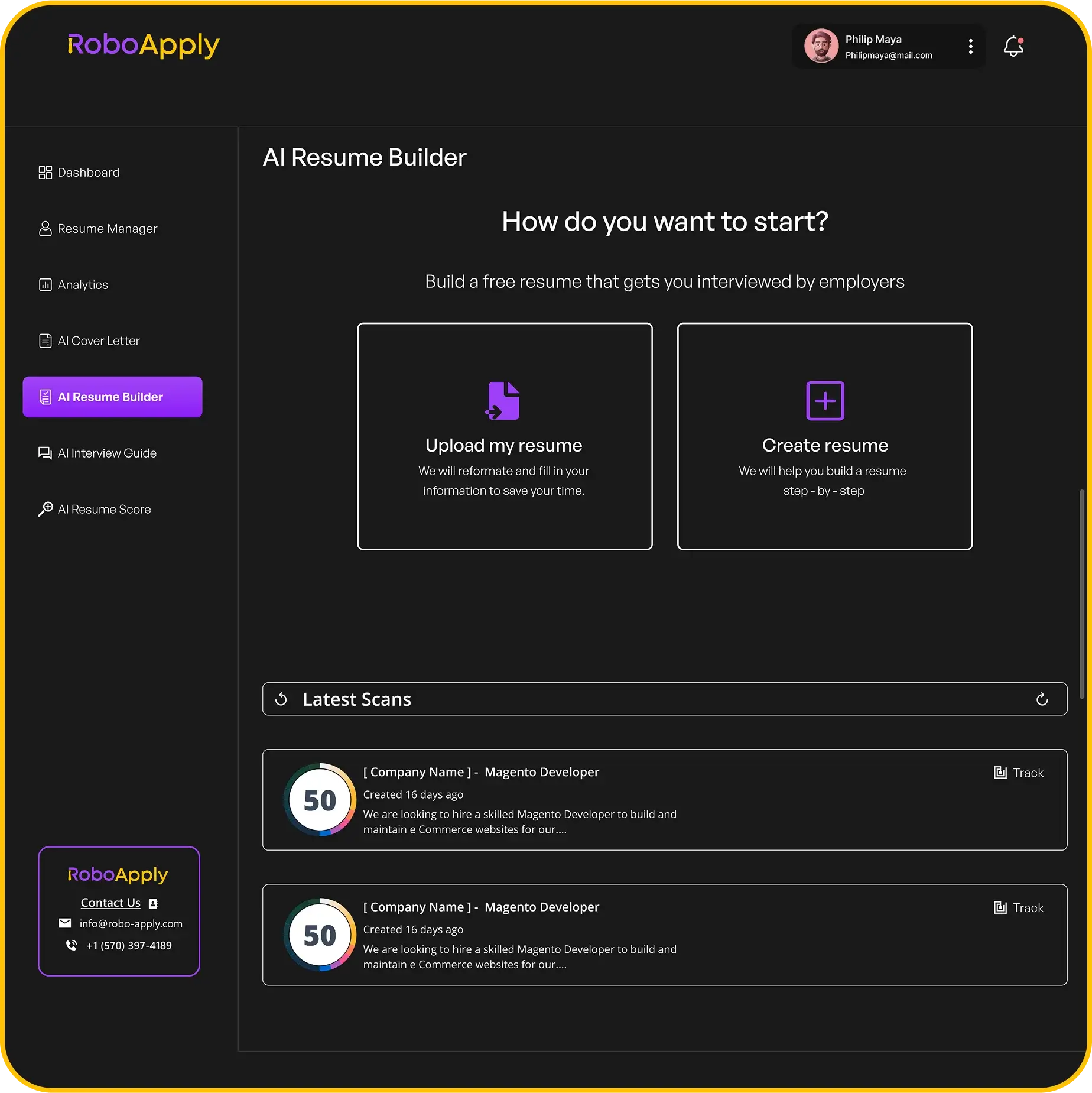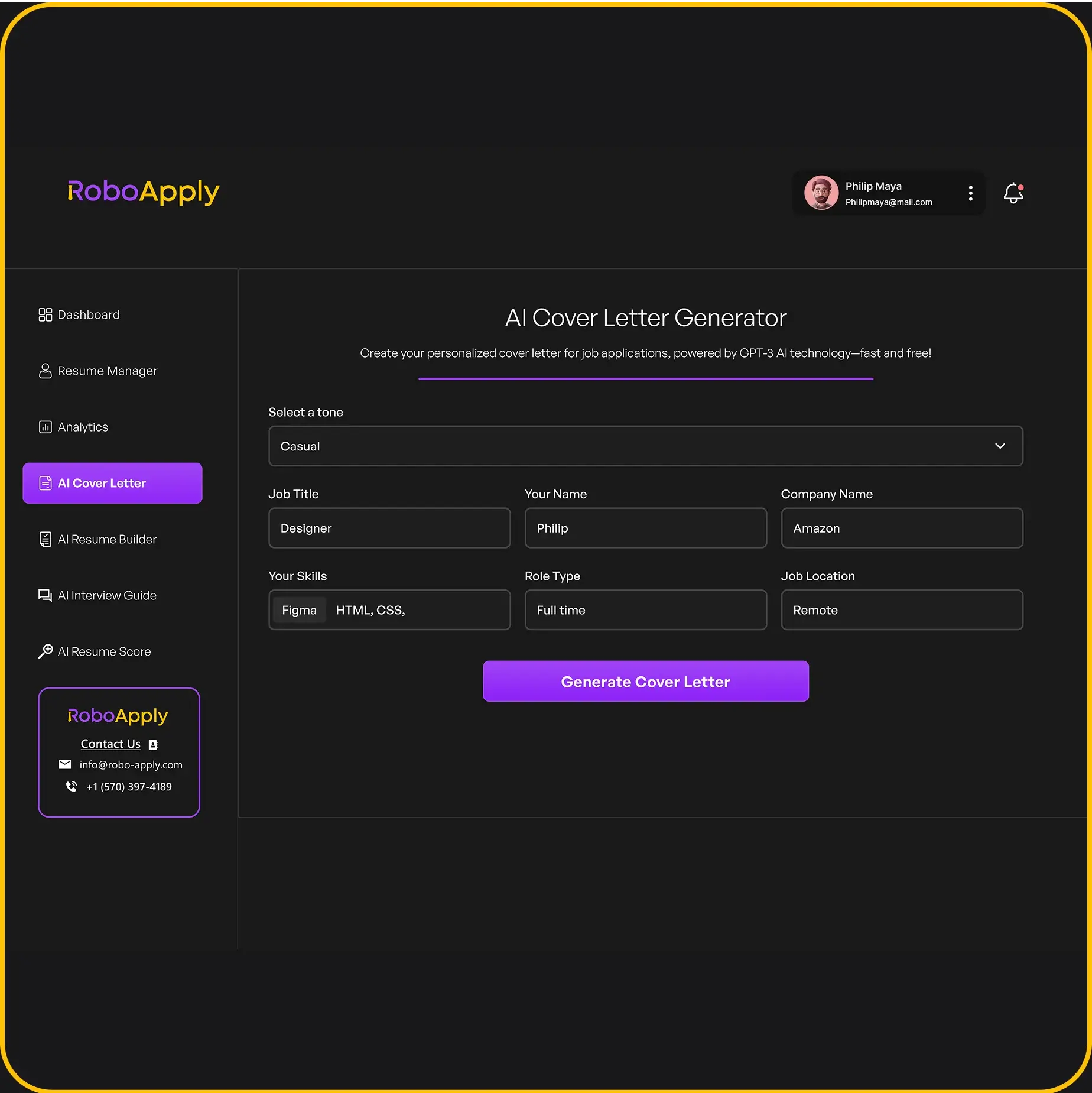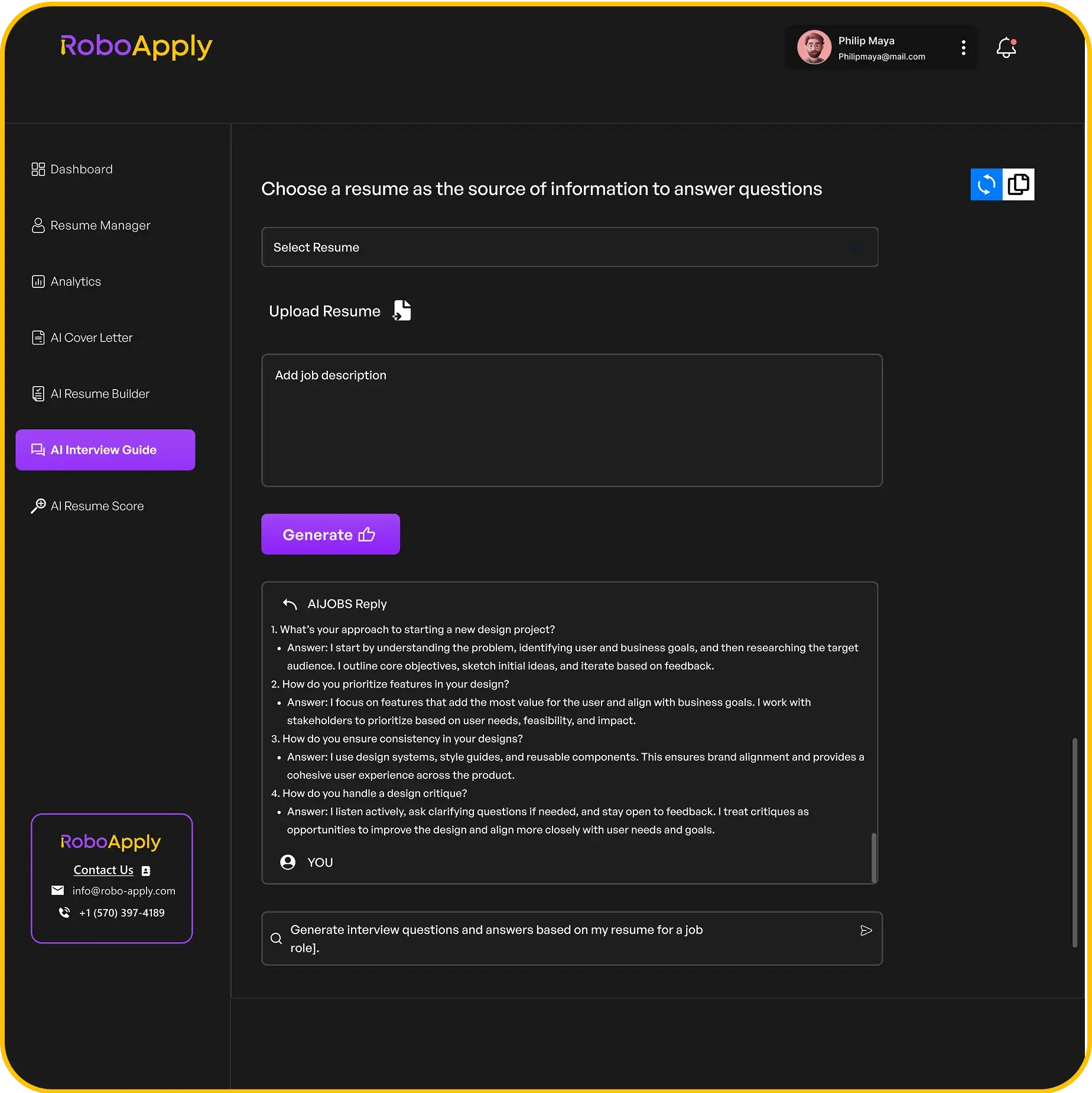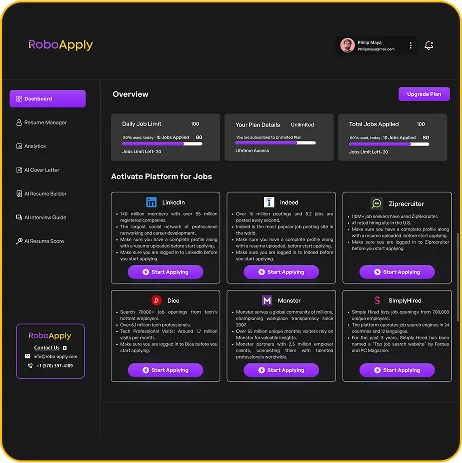Your professional success depends on how well you present yourself online. LinkedIn has transformed from a simple resume platform into a powerful networking hub with over 740 million members worldwide. Today’s job market demands more than just submitting applications.
You need a strategic approach to stand out among millions of professionals. Recruiters actively search for candidates who demonstrate expertise and engagement. Your digital presence directly impacts career opportunities and personal branding success.
This comprehensive guide provides actionable strategies to transform your professional presence. You’ll discover how tools like RoboApply can streamline your job search while you focus on building a better LinkedIn profile. Each technique delivers immediate results that enhance visibility and attract the right opportunities.
Key Takeaways
- Strategic LinkedIn optimization increases recruiter visibility and career opportunities
- Professional networking requires consistent engagement and authentic personal branding
- RoboApply streamlines job applications while you focus on building your online presence
- Actionable profile improvements deliver immediate results in competitive job markets
- Comprehensive optimization strategies transform profiles into powerful career advancement tools
Understand the Importance of Your LinkedIn Profile
LinkedIn has grown from a simple networking site to a key tool for career growth. Your profile acts as your professional showcase, working 24/7 to showcase your brand and attract opportunities. Before we dive into linkedin profile tips, it’s crucial to understand why making your profile shine is vital for your career.
Your LinkedIn profile plays a big role in today’s job market. It helps recruiters find you, shows you’re an expert in your field, and opens doors for business growth. If your profile is incomplete, it won’t show up in searches, making you invisible to new chances.
What Sets LinkedIn Apart?
LinkedIn is different from other social media sites in several ways. It focuses on professional content and career-focused interactions, making it the top spot for business networking and job hunting. Unlike Facebook or Instagram, LinkedIn is where people look for professional connections and job opportunities.
Your LinkedIn profile is like a digital business card, resume, and networking tool all in one. Recruiters and hiring managers use it to research candidates. A strong profile can make a big difference in whether you move forward in the hiring process or get missed.
LinkedIn’s focus on professionalism means every part of your profile should match your career goals. Complete and optimized profiles get seen more in searches and get more recommendations.
Key Stats on LinkedIn Utilization
LinkedIn’s growth numbers tell a story of its importance in professional networking. It now has over 740 million members in more than 200 countries, making it the largest professional network worldwide.
These numbers show LinkedIn’s huge reach and impact in the professional world. Every second, three new professionals join LinkedIn, showing its continued growth and importance. With LinkedIn’s global reach, your profile can attract opportunities from all over the world.
Knowing these numbers helps you see the competitive landscape you’re in. With millions of professionals competing for attention, it’s crucial to follow linkedin profile best practices to stand out. Your profile must compete with hundreds of thousands of others in your field and location.
LinkedIn’s search function handles millions of queries daily from recruiters and hiring managers. This means your profile’s optimization directly affects your visibility and career chances. Without proper optimization, you’re invisible in this vast network.
Craft a Compelling Headline
Your LinkedIn headline is like a magnet for the right opportunities. It’s a 220-character space right under your name in search results. It’s your first impression to employers, clients, and networking contacts.
Your headline decides if someone clicks on your profile or not. Unlike a resume, LinkedIn lets you craft a message that shows your professional value.
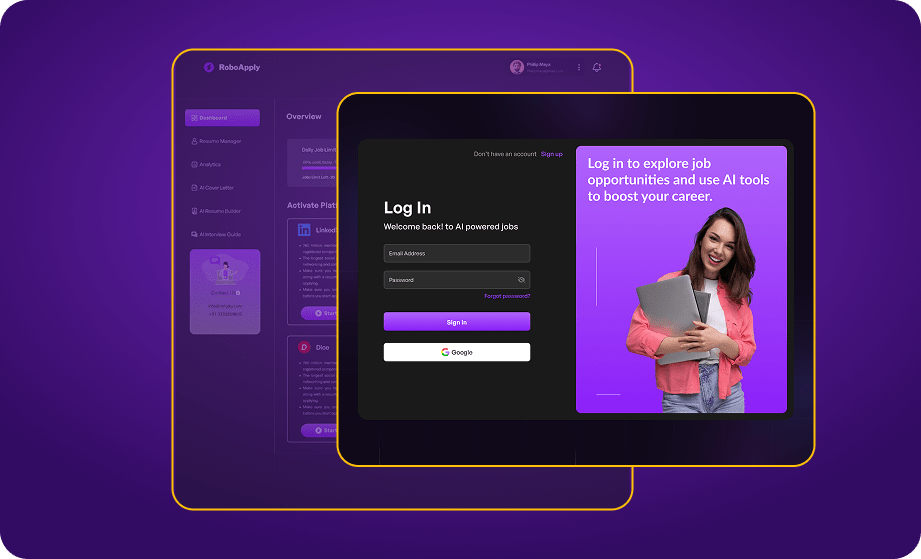
Think of your headline as a short elevator pitch. It should quickly tell who you are, what you do, and what you bring to the table.
Make It More Than Just a Job Title
Just listing your job title is a waste. You should show your expertise, specializations, and results.
Here are some examples of linkedin profile enhancement through better headlines:
“Marketing Manager” becomes “Digital Marketing Manager | SEO & PPC Expert | SaaS Growth Specialist | Driving 40% Revenue Growth”
This version tells viewers about your marketing specialty, skills, industry, and achievements. It shows how a simple job title can become a compelling value proposition.
Here’s another example of a strategic headline makeover:
“Software Developer” becomes “Full-Stack Developer | React, Node.js, Python Expert | Fintech Solutions | Building Scalable Applications”
This headline immediately shows your technical skills, industry focus, and solution types. It helps recruiters find you if they’re looking for specific skills.
| Weak Headlines | Strong Headlines | Key Improvements |
|---|---|---|
| Sales Representative | B2B Sales Professional | Enterprise Software | Consistently Exceeding 120% of Quota | Specifies market, industry, and performance metrics |
| Project Manager | Agile Project Manager | Healthcare IT | PMP Certified | Delivering Projects 15% Under Budget | Includes methodology, industry, certification, and results |
| Graphic Designer | Brand Identity Designer | E-commerce & Startups | Adobe Creative Suite Expert | Award-Winning Campaigns | Defines specialization, target market, tools, and achievements |
| Data Analyst | Business Intelligence Analyst | SQL, Python, Tableau | Retail Analytics | Driving Data-Driven Decisions | Specifies role type, technical skills, industry, and impact |
Incorporate Keywords for Better Visibility
Using keywords in your headline makes your profile easier to find. Recruiters search for specific terms, and your headline should match.
RoboApply’s ATS optimizer finds the best keywords for your field. It looks at job postings to see which terms are most common.
When you’re updating your linkedin profile makeover, include these keywords:
- Technical skills: Programming languages, software platforms, methodologies
- Industry terms: Sector-specific vocabulary that recruiters commonly search
- Role-specific keywords: Job titles and function-related terms
- Certifications: Professional credentials that validate your expertise
Avoid stuffing keywords. Instead, naturally include them in a message that’s easy to read aloud.
Put your most important keywords at the start of your headline. LinkedIn’s search favors terms at the beginning.
Update your headline often. Skills and industry trends change, so your headline should too.
Write an Engaging Summary
Creating a compelling LinkedIn summary is all about telling a story that grabs attention right away. It’s your chance to show off your skills and connect with people who matter. A good summary can make someone want to reach out and connect with you.
You have 2,000 characters to tell your story. The first 265-275 characters are key because they show up before someone clicks “See More.” Start with something powerful that tells people what you do and who you help.
Tell Your Professional Story
Your story should start with what you do now and then move to your biggest achievements. Begin with your current role and what you bring to the table. Then, share your most impressive work using numbers to show your impact.
Instead of just listing your job duties, focus on the results you’ve achieved. For example, say “increased social media engagement by 200% across three platforms.” This shows how you’ve made a difference.
Organize your story in clear paragraphs. Start with who you are today, then highlight your biggest wins, and end with what you’re aiming for next. This keeps your story engaging and builds trust.
RoboApply’s AI can help you pick out your best achievements to highlight. It looks at your experience and suggests the most impressive accomplishments for your industry and role.
Use Effective Formatting Techniques
Good formatting makes your summary easy to read and scan. Use short paragraphs and bullet points to break up the text. This makes your content more engaging.
Include industry keywords naturally in your text. This helps your profile show up in searches and shows you know your stuff. But don’t overdo it – keep your story flowing smoothly.
Here are some tips for formatting your summary:
- Lead with your strongest achievement in the opening paragraph
- Use bullet points for lists of accomplishments or specialties
- Include relevant keywords that match your industry and target roles
- Add multimedia elements like presentations or portfolio samples
- End with a clear call-to-action inviting connections or conversations
Your summary should end with a call-to-action. Tell people what you want them to do next, like connect with you or visit your website.
For ideas and examples, check out LinkedIn summaries that work. These can help you create a great summary that’s still your own.
Utilize Your Profile Picture Wisely
A good profile picture can change how people see your professional brand. It’s the first thing people see when they look at your profile. A well-chosen photo can make a big difference in your professional networking.
Choose a photo that looks good and is recent. It should show how you look now and your professional side. The photo needs to look clear on all devices and platforms.
Choosing the Right Photo
Your face should take up about 60% of the frame. This makes sure your face is clear in search results and when people suggest you as a connection. The photo should be at least 400 x 400 pixels to avoid blurry images.
Wear clothes that fit your job and industry. Business formal is best for corporate jobs, while business casual works for creative fields. Your clothes should not take away from your face or cause distractions.
A real smile that shows in your eyes is key. It makes people trust you and want to connect. Avoid fake smiles or serious looks that might seem off-putting.
Follow professional photo tips to make sure your image looks good and follows industry standards.
Background vs. Foreground Considerations
Choose a background that is simple and doesn’t distract from your face. Solid colors or a simple office or outdoor setting work best. Avoid backgrounds that are too busy or might make people question your judgment.
Good lighting is important for a clear photo. Natural light from a window is best, but professional lighting setups can also work well. Bad lighting can make even the best photo look unprofessional.
Avoid common photo mistakes that can hurt your professional image. Don’t use group photos where it’s hard to tell who you are. Personal photos or photos with pets are better for personal social media, not your professional profile.
Your photo should only show you, in the center of the frame. Photos with multiple people can confuse viewers and weaken your professional message. Your profile picture should show your professional identity, not your social life or family.
Showcase Your Skills Strategically
Creating a strong skills section is more than just listing all your skills. It’s a quick reference tool for recruiters and hiring managers. By optimizing your LinkedIn profile, you focus on skills that match your career goals.
It’s better to have a few key skills than many. Choose 10-15 skills that are most important for your job goals. This makes your profile stand out and easy to scan.

Prioritize Top Skills for Your Industry
Put your most valuable skills at the top for more visibility. Focus on skills that employers actively seek in your field. Look at job postings to find the most in-demand skills.
Here are some tips for prioritizing skills:
- Technical skills specific to your profession
- Soft skills that show leadership and teamwork
- Industry-specific tools and software you know
- Certifications that prove your skills
Ask for endorsements from people who know your work well. These endorsements boost your credibility and show your skills in action.
You can pick which endorsements to show or hide. This lets you highlight the most relevant endorsements and keep your profile focused.
Use RoboApply for ATS Optimization
RoboApply’s ATS optimizer finds the most wanted skills in your field. It analyzes job postings and trends to make sure your profile matches what employers want.
This tool gives you insights into:
- Keyword frequency in job descriptions
- Skill combinations that work well together
- Emerging trends in your field
- ATS-friendly formatting for better visibility
Using RoboApply’s data to optimize your skills section boosts your chances of being found by recruiters. It shows you which skills to focus on and how to present them.
Don’t forget to return endorsements to your network. This builds a cycle of mutual support and strengthens your professional network. Also, stay active in your connections’ skills to stay visible in their networks.
Highlight Relevant Work Experience
Many professionals list job duties instead of their real impact. Your work experience section should tell a story of growth through achievements and results. This makes your profile a powerful tool that shows your value to employers.
The key to linkedin profile tips is focusing on outcomes, not just activities. Instead of saying “managed social media accounts,” show results like “increased social media engagement by 200% and generated 150 qualified leads monthly.” This makes your profile stand out.
Your work experience section is key for showing career growth. You don’t need to list every job. Prioritize roles that match your career goals and highlight skills employers want.
Focus on Achievements Over Responsibilities
Change your job descriptions to focus on what you achieved, not just what you did. This is a top linkedin profile best practice for getting recruiter attention.
For each relevant job, list 3-5 key achievements. Choose results that show your impact and match your career goals. Use specific numbers to show your success.
- Revenue impact: “Increased quarterly sales by 35%, generating $2.3M in additional revenue”
- Process improvements: “Streamlined operations workflow, reducing processing time by 40%”
- Team leadership: “Led cross-functional team of 12 members to deliver project 3 weeks ahead of schedule”
- Cost savings: “Implemented new vendor management system, saving company $150K annually”
“Your LinkedIn profile should be a living document that evolves with your career. Regular updates ensure you capture your most recent achievements and maintain relevance in your industry.”
Use Action Verbs to Strengthen Descriptions
Start each bullet point with strong action verbs that show leadership and initiative. Words like “developed,” “implemented,” “increased,” “managed,” and “delivered” make your descriptions dynamic.
Avoid weak phrases like “responsible for” or “duties included.” These phrases don’t show your real contribution. Instead, use strong verbs that clearly show your role in achieving results.
Keep your current position updated with new projects, promotions, or achievements. This shows your ongoing growth and keeps your profile accurate for future opportunities. For more tips, check out our LinkedIn profile optimization checklist and best practices.
Acquire and Display Recommendations
Getting recommendations on LinkedIn can really boost your profile. They offer real insights into your work and character. Unlike simple endorsements, they tell detailed stories of your achievements.
It’s best to aim for three to five quality recommendations. They should show off different sides of your skills. Each one acts as proof of your expertise, based on real experiences with others.

Requesting Genuine Endorsements
LinkedIn makes it easy to ask for recommendations. But, generic requests often get weak or slow responses. Personalized requests, on the other hand, lead to better and more meaningful testimonials.
When asking for a recommendation, remind the person of your shared projects. This helps them remember your specific contributions. For example, you might say: “Hi Michael, I hope you’re doing well! I’m updating my LinkedIn profile and would greatly appreciate a recommendation from you regarding our work on the Peterson campaign, focusing on strategic planning and team coordination.”
It’s smart to ask different people for recommendations. This way, you get a full picture of your skills:
- Supervisors can talk about your leadership and results
- Peers can share about your teamwork and collaboration
- Clients can highlight your customer service and problem-solving
- Direct reports can speak to your management and mentoring
Guide the recommender on what skills or achievements to focus on. This helps them provide the most relevant information for your profile.
Placing Recommendations Effectively
Where you place your recommendations matters. Put them in places that tell your professional story well.
Put your strongest recommendation at the top. This should be from someone respected, like a supervisor or a big client. They should highlight your biggest achievements.
Spread out your other recommendations in different parts of your profile:
- Experience section – Link to roles where you worked together
- Skills section – Use recommendations that back up your top skills
- Projects section – Include ones that show your success in projects
Keep an eye on your recommendations to make sure they’re still relevant. As you grow in your career, older recommendations might not be as impactful as newer ones.
Think about the overall mix of your recommendations. You want them to show a complete picture of your skills and experiences.
Include Projects and Certifications
Projects and certifications show your skills, making your LinkedIn profile revamp more believable and appealing to employers. They turn your profile into a dynamic showcase of your skills and dedication to professional growth.
Rich media content makes you stand out from others who just use text. Visuals like portfolio links, presentations, and videos show your work quality and achievements clearly.

Show Off Relevant Projects
Your project showcase should highlight 3-5 key accomplishments that show your expertise and problem-solving skills. Choose projects that match your target roles and include measurable results when you can.
Each project description should have a clear structure: challenge, approach, and results. Here’s an example:
E-commerce Website Redesign: Led a complete UX/UI overhaul for an online retailer. This led to a 35% increase in conversion rates and a 50% reduction in cart abandonment. I worked with the development team to implement a responsive design and improve site speed on all devices.
Include direct links to live websites, portfolios, case studies, or presentations. These examples prove your skills and let recruiters see your work firsthand.
RoboApply’s job tracker helps you find which projects employers like most. This information helps you choose which projects to highlight in your LinkedIn profile.
Highlighting Certifications That Matter
Showing off the right certifications proves your expertise and shows you’re committed to learning. Focus on industry-recognized credentials that match your career goals and target positions.
Highlight recent certifications and training that show you’re up-to-date with industry trends. Employers value candidates who keep learning and adapt to new market demands.
Consider these certification categories for maximum impact:
- Technical skills: Programming languages, software proficiency, or specialized tools
- Industry standards: Professional certifications specific to your field
- Leadership development: Management training or project management credentials
- Emerging technologies: AI, data analytics, or digital marketing certifications
RoboApply’s job tracking system shows which certifications are most common in job postings for your target roles. This helps you focus your professional development and make sure your certifications match market needs.
Remember to include when you completed the certification and who issued it for credibility. Link to verification pages when available to prove your credentials right away.
Optimize for Networking
Networking on LinkedIn can turn your profile into a powerful tool for building relationships. A LinkedIn profile upgrade shines when you connect with the right people and keep those connections strong.
Good networking is more than just adding contacts. It’s about creating meaningful connections that help you grow in your career.
Building Connections with Purpose
It’s better to have a few quality connections than many random ones. Start by linking up with colleagues, peers, and people you meet at events or through mutual friends.
Always send a personalized message when you connect. A generic request might get ignored, but a thoughtful message can start a strong relationship.
Look for connections in your industry or in roles you want. These connections can offer more value than random networking.
Interact with your network by commenting on their posts and sharing content. Celebrate their successes and offer support when needed.
Using RoboApply's Outreach CRM Effectively
RoboApply’s CRM makes networking easier by helping you manage your contacts and follow-ups. It keeps your communication with your network consistent.
Use the CRM to find employees at companies you’re interested in. This can lead to referrals or insider tips. The LinkedIn profile improvement process gets better with strategic outreach.
Networking is a two-way street. Give value to your connections by introducing them to people, sharing resources, or offering insights. This builds stronger, more mutual relationships.
| Networking Strategy | Best Practices | RoboApply Features | Expected Outcomes |
|---|---|---|---|
| Connection Targeting | Research industry professionals and company employees | Contact organization and tracking | Higher quality connections |
| Follow-up Management | Schedule regular check-ins and updates | Automated follow-up reminders | Stronger relationship maintenance |
| Opportunity Tracking | Monitor connections for job openings | Job tracker integration | Increased referral potential |
| Value Exchange | Share resources and make introductions | Communication history tracking | Reciprocal professional relationships |
Use RoboApply’s job tracker to find opportunities in your network. This integrated approach boosts the career benefits of your connections.
Keep Your Profile Fresh and Updated
Your LinkedIn success depends on keeping it up to date. A profile that doesn’t change quickly gets left behind in today’s fast world.
Regularly Review and Refresh Content
Make it a habit to check your LinkedIn profile every month. Add new achievements and projects to your experience section. LinkedIn’s algorithm likes active profiles, so fresh content helps you get noticed.
Change your headline and summary every three months. This keeps your career goals and industry knowledge current.
Set Reminders for Profile Updates
Use calendar alerts to remember to update your profile. Change your contact info right away if it changes. Update your profile picture every two years to look professional.
Use LinkedIn analytics to see what your network likes. This helps you know what to post.
FAQs About Optimizing Your LinkedIn Profile with RoboApply
How often should I optimize my LinkedIn profile?
Check your profile every month and update it as needed. RoboApply’s interview coach helps you find new achievements to share.
Can RoboApply help maintain my LinkedIn optimization?
Yes, RoboApply offers ongoing support. Its interview coaching helps you talk about your achievements, making your profile better.
What Features Does RoboApply Offer for LinkedIn Optimization?
RoboApply’s outreach CRM works with your LinkedIn strategy. The interview coach helps you share your achievements. These tools help improve your LinkedIn profile and support your job search.
FAQ
How often should I update my LinkedIn profile to maintain optimal visibility?
Update your LinkedIn profile at least once a month. This keeps your professional image current. Update your experience section with new achievements and projects as they happen. Set reminders every quarter to check your headline, summary, and skills.
LinkedIn favors active users. So, share insights, comment on posts, and publish content regularly. This will make your profile more visible.
What makes an effective LinkedIn headline that attracts recruiters?
A good LinkedIn headline includes your role, key skills, and industry within 220 characters. Instead of “Marketing Manager,” say “Digital Marketing Manager | SEO & PPC Expert | SaaS Growth Specialist | Driving 40% Revenue Growth.” This shows what you do and the results you get.
RoboApply’s ATS optimizer finds the best keywords for your field. This ensures your headline matches what recruiters look for.
How can RoboApply help with LinkedIn profile optimization?
RoboApply offers several tools to improve your LinkedIn profile. The ATS optimizer finds the right keywords for your industry and role. The AI resume and cover letter builder highlights your achievements in your summary.
The job tracker shows which certifications employers value most. The outreach CRM organizes your networking efforts and schedules follow-ups.
What should I include in my LinkedIn summary to make it compelling?
Start your LinkedIn summary with a strong opening that grabs attention. Clearly state what you do and who you serve. Use clear paragraphs to flow from your current role to your achievements and future goals.
Use bullet points or short paragraphs for easy reading. Include industry-specific keywords naturally. Quantify your achievements, like “Increased organic traffic by 150% through strategic SEO implementation.” End with a call-to-action to connect with you.
How many skills should I list on my LinkedIn profile?
List 10-15 core skills that relate to your career goals and target roles. Focus on skills relevant to your industry. RoboApply’s ATS optimizer identifies the most sought-after skills in your field.
This ensures your profile matches what employers are looking for.
What makes a professional LinkedIn profile photo effective?
Your LinkedIn profile photo should be high-quality and recent. It should clearly show your face, taking up about 60% of the frame. Wear professional attire that fits your industry’s dress code.
Keep a warm and approachable facial expression with a genuine smile. Ensure the background is clean and well-lit. Avoid group photos, casual selfies, or images with distracting elements.
How should I request LinkedIn recommendations effectively?
Personalize your request by reminding the person of specific projects you worked on together. Suggest skills or achievements they might highlight. For example: “Hi Sarah, I hope you’re doing well! I’m updating my LinkedIn profile and would greatly appreciate a recommendation from you regarding our work on the Johnson account, particularlly around the project management and client relationship aspects.”
Strategically request recommendations from supervisors, peers, and clients who can speak to different aspects of your professional capabilities.
What’s the best way to describe work experience on LinkedIn?
Focus on achievements and measurable results, not just job descriptions. Start each bullet point with strong action verbs like “developed,” “implemented,” “increased,” “managed,” or “delivered.” Use quantifiable metrics whenever possible.
Include 3-5 key achievements for each relevant position. Focus on results that align with your target roles and demonstrate your impact.
How can I use LinkedIn effectively for professional networking?
Build meaningful professional relationships by connecting with colleagues, industry peers, and professionals you meet. Always include personalized messages explaining how you know them or why you’d like to connect. RoboApply’s outreach CRM helps manage your networking efforts.
Engage with your network by commenting on posts, sharing relevant content, and congratulating connections on achievements. Quality over quantity is key—target connections who align with your career goals and can provide valuable insights and opportunities.
Should I include all my work experience on my LinkedIn profile?
You don’t need to include every job you’ve ever held on your LinkedIn profile. Prioritize positions that demonstrate career progression and relevant experience for your target roles. Focus on roles that showcase your professional growth and align with your current career goals.
For each position, emphasize specific achievements and measurable results that demonstrate your value to potential employers. Use 3-5 key accomplishments per relevant role.
How do I optimize my LinkedIn profile for better search visibility?
To optimize your LinkedIn profile for search visibility, incorporate relevant keywords naturally throughout your headline, summary, and experience sections. Use industry-specific terminology that recruiters and hiring managers are likely to search for. RoboApply’s ATS optimizer can help identify the most effective keywords for your field.
Ensure your profile is complete with all sections filled out. LinkedIn’s algorithm prioritizes comprehensive profiles. Regular activity and engagement also boost your profile’s visibility in search results.
What types of projects should I showcase on my LinkedIn profile?
Showcase 3-5 significant projects that demonstrate your expertise and problem-solving abilities. Include links to live websites, portfolios, case studies, or presentation materials whenever possible. For each project, provide a brief description explaining the challenge, your approach, and results achieved.
For example: “E-commerce Website Redesign: Led complete UX/UI overhaul for online retailer, resulting in 35% increase in conversion rates and 50% reduction in cart abandonment.” Focus on projects that align with your target roles and showcase skills relevant to your career goals.
